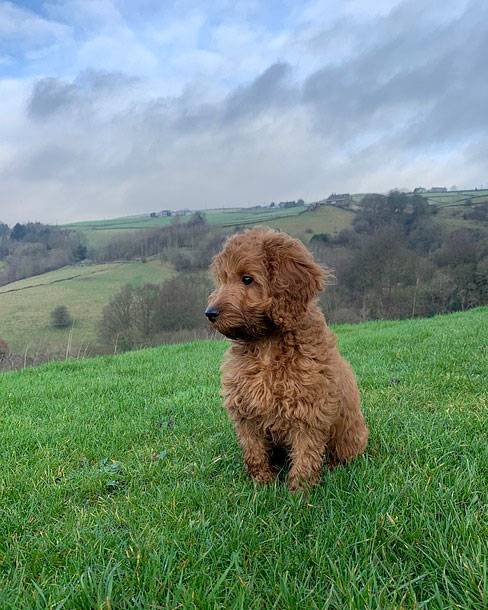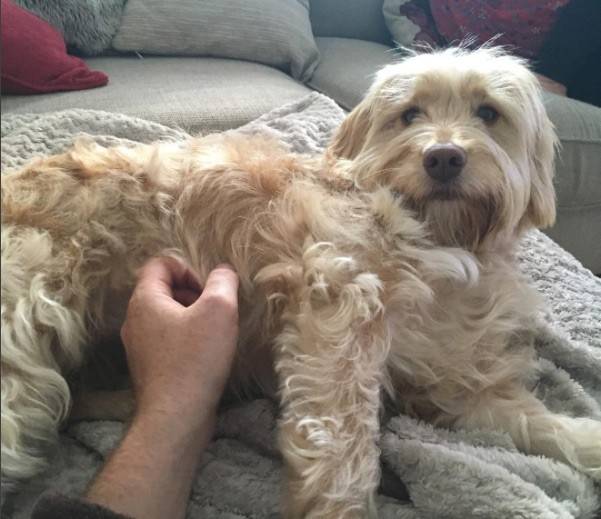As far as we are concerned here at Cockapoo HQ, there isn’t much these cute canines can do wrong. They ooze an inimitable charm and are without a doubt, one of the brainier breeds around. While they might not be as intelligent as the border collie, the world’s smartest dog, the cockapoo is a mix between a cocker spaniel and a poodle, the second brightest breed.
Combining the best characteristics of the spaniel and poodle, Cockapoos are smart, sociable, energetic and playful, but if left to their own devices, boredom can quickly lead to destructive behaviour.
An important responsibility you have as a dog owner is ensuring your dog is trained, and that is no different for cockapoos. It is a good idea to consider taking your new cockapoo puppy to special training classes. Not only will this give you the training techniques you need, but will give your puppy a chance to have some crucial socialisation which will help them later in life.
Whether you decide to take them to official training classes or not, you are undoubtedly looking for cockapoo training tips to help you as a first time owner. You’ve come to the right place.
Cockapoo Training – How to Train A Cockapoo
Contents and Quick Navigation

This unique cross breed is considered one of the easiest to train. Cocker Spaniels are a hunting breed, who love to learn and are keen to please their humans. Similarly, poodles are intelligent and very eager to learn.
Puppy Training
While there are some obvious dos and don’ts when you bring your puppy home, it is essential you start with training as soon as possible, through using a qualified trainer, or maybe giving it a go yourself with the help of YouTube, or a training book. You can also join an online dog training course, such as that offered by DogAcademy.org, to make the process smoother.
Even though young pups shouldn’t be going out until they have had their vaccinations, you can start getting yours used to a collar and lead around the house or we prefer to use a harness. It is also important that you spend time touching your fur baby around the feet, ears and tail. This gets them used to being handled in a non-threatening way and will make visits to the vet or parlour a whole lot easier.

Basic Training
Cockapoos, like any other breed, should be socialised while they are puppies. These classes let them experience other dogs, people, situations and places and will teach them basic commands like “Sit”, “Heel”, “Down” and “Come”. When your cockapoo puppy knows and understands the basics, it is easier to manage them at home, at the vet and out on walks. Letting them off the lead for the first time and having them could back should always be one of the biggest things you can reward.
It is also a great way to establish an unbreakable bond between you and your furry friend and will stand you in good stead for years to come.
But what if you are the proud new owner of an older Cockapoo or a rescue? With a lot of love, patience and persistence, you will be able to teach your old dog new tricks in no time at all.
Toilet Training
Toilet training is one of the most important aspects of training a cockapoo, as it is of training any other dog. Although there are lots of aids and different tactics you can use, such as using special puppy pads inside their play area or crate or laying newspaper down to try and encourage them to do their business in a particular spot, the best option in the long run is to take your new puppy outside regularly.
You need to reward your cockapoo and praise him or her when they do the toilet outdoors. It also helps, even if it makes you a little uncomfortable at first, to give their toilet function a name, as this will help your cockapoo to learn to go to the toilet when you command or know at least what you expect from them when you use certain words and phrases.
Positive Reinforcement
Pups, like most people, do better with positive reinforcement. This means rewarding them when they respond correctly rather than punishing them for their mistakes. Rewards can include small treats, cuddles and love, praise or anything else your dog especially enjoys.
Using positive reinforcement is a great way to keep your ‘poo motivated and enthusiastic, and you will see results quickly.
Crate Training
Okay, so not everyone is comfortable with the idea of using a crate for their dog. However, there are some distinct advantages as an owner for using this. If done properly, you can introduce the crate as a safe place for your cockapoo that’s their own special place.
A great way to make a crate more appealing to your cockapoo is to drape a sheet or blanket over it so it looks more appealing and cosy. Obviously, you need to be careful when the temperature rises during summer to make sure there is enough ventilation so that your dog doesn’t overheat.
If crate training is something you are interested in, it is best to introduce this as soon as you can. Make sure you line the bottom with comfortable and soft bedding that can be washed easily, and start feeding your cockapoo puppy at the crate and even in it, and giving him or her treats. You want to encourage them that it’s a nice place to be and nothing bad.
Separation Anxiety
All the lovely parts of a cockapoo’s loving and loyal nature, is that they can develop separation anxiety and become very clingy. Although other dog breeds suffer from it, we’ve noticed that it’s a regular occurence in cockapoos especially. This condition means your dog doesn’t like being left alone for any length of time.
It can lead to some unfortunate and unpleasant symptoms and behaviours that can make life hard for both you and your dog.
Obviously, as sociable dogs, they prefer to be in the company of their pack, their family. However, dogs need to learn to comfortable and content on their own from time to time. It is therefore vital that when you are training your dog that you take preventative measures against the condition and establish some boundaries and instigate a proper routine.

This should start from the moment you bring your new dog home for the first time.
While you won’t want to leave them alone for a great length of time, you still need to teach your dog that it is ok for you to doing something in one part of your house and for them to be in another.
This will help your dog to learn that it’s okay if you are not there and you are going to come back.
As with any kind of training, it’s best to take it slowly. We have covered separation anxiety in greater detail here, so would recommend you take a look at that page for more information and tips.
Summing it up…
Cockapoos are a very loving, intelligent and overall great dog breed. As a cross between a cocker spaniel and poodle, there is no dispute over their intelligence or personality. However, without adequate dog training, you could have a troublesome dog on your hands. Cockapoos need training from a young age and it’s best to implement techniques that you intend to use when they are an adult dog too.
For more on training methods for cockapoos, we would also recommend you take a look at The Cockapoo Club‘s site too.
Mike is the proud owner of a 7-year-old Cockapoo named Luna. He loves to share stories, tips and information about owning a Cockapoo. With over7 years of experience as an owner, Mike is passionate about helping others own and care for their dog.
Top 5 Popular Cockapoo Products

I really need some help with my gorgeous Cockapoo Ollie. He is a darling and is generally a very good boy. He is now 8 months old. My problem is that he completely loses focus when anyone in the street approaches him or, worse still, if I have visitors to my home – this includes my very young grandchildren. Ollie will jump and yelp at the visitors. It really is becoming a problem as it takes him about 20 or 30 minutes to eventually calm down. I have cut down on inviting people to my house because of it as conversations are difficult. I have now changed my Christmas and New Year plans because of his behaviour. He gets so excited when my husband comes home from work that he urinates on the floor. I tell everyone to ignore his jumping and to turn their backs on him and not make any eye contact but he will be relentless in his pursuit of attention. What on earth can I do?
Have you tried giving people a couple of treats for their pockets so when they come in they tell him to sit – when he does the guests give him a treat – he will soon learn when guests come he needs to sit to get a treat then lots of attention. Also in the street – keep him on a very short lead and hand people who come up to him a treat and ask they make him sit first or you do it before they approach…. let me know how you get on